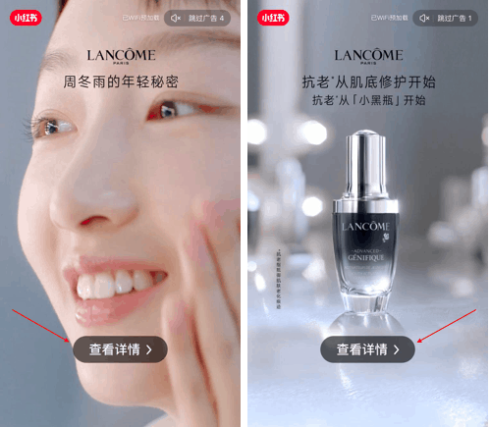Little Red Book, the e-commerce app based on community
14/05/22
4'
Counting a community of more than 700 million consumers, Little Red Book (also known as RED or XiaoHongShu) is one of China’s most popular shopping apps. It’s secret? Providing a social experience, allowing consumers to buy products recommended by other users within its platform. Discover how Little Red Book has become one of China’s key platforms in a matter of years, seducing the biggest international brands.
What is Little Red Book?
Founded in 2013, Little Red Book is a cross between Pinterest and Amazon. Initially intended for consumers to share advice and opinions on buying abroad, Little Red Book is now a leader in cross-border e-commerce. This community platform skillfully blends interaction and e-commerce by allowing its users to exchange and share their shopping experiences. In the form of text, images, and videos, members post opinions and recommendations on both Chinese and international brands and products. In 2022, RED counted over 202 million monthly active users on its platform. Its community is mainly composed of women (+65%), 70% of whom were born after 1990.

According to iiMedia, Little Red Book accounted for 5.6% of the cross-border e-commerce market in the first quarter of 2018.
Internationally focused, the platform stands out from other players in the sector thanks to its strong, committed community, which is built on trust and credibility. Whether consumers, influencers or even celebrities, users upload content daily to help the rest of the community discover new products. RED uses artificial intelligence and machine learning to provide content recommendations adapted to the profile of its users.
The application allows users to find all types of lifestyle products such as beauty, fashion, travel, food, fitness, and so on. Content can be found via three sections: “Follow” (content by users you are following), “Explore” (new content to explore) and “Nearby” (new content created near your location).
Little Red Book is extremely dynamic. Fast Company ranked the platform in the Top 3 of the most innovative Chinese companies behind Meituan Dianping and Alibaba Group. The social platform competes with other key players in the sector such as Kaola, Tmall Global (Alibaba Group) and JD.com.
Advertise your products on Little Red Book
Today, more than 20,000 brands have an account on Little Red Book, including international brands such as Saint Laurent Paris, Lancôme and Louis Vuitton who have been seduced by the international appeal of this platform.
As of 2019, brands have been able to access a “brand account” (formerly user account) to benefit from increased visibility while providing consumers a brand experience. The platform allows brands to have a certified account in order to exchange with their community, launch promotional campaigns, access marketing tools to optimise communication with consumers, configure their online store to increase their sales, and more.
To amplify their presence on Little Red Book, many brands work with Key Opinion Leaders (KOLs). Facilitating exchanges between brands and partners, RED launched its influencer marketing platform in 2019. To collaborate with brands, KOLs must have more than 5,000 subscribers and over 10,000 views on average per post. Other brands are turning to Key Opinion Consumers (KOCs), which are less popular but sometimes more effective. Considered to be more “authentic”, KOCs have more impact on the purchasing decision of buyers looking for the product that best suits their needs.
In addition to opinion leaders, Little Red Book provides brands with two advertising formats allowing them to promote the launch of new products or promotions on specific items. These ads take the form of a pop-up that appears when the application is opened, or as an insert integrated within the explorer page, redirecting consumers to a specified page.

As far as e-commerce is concerned, Little Red Book allows brands to open “RED Stores” to sell products. These stores are available within the app, meeting the growing demand from users who wish to purchase foreign products. RED also has a marketplace called Fulishe. The platform is managed directly by Little Red Book, taking care of logistics, customer support, marketing, etc. Fulishe currently hosts nearly 10,000 third-party brands and distributors and more than 100,000 products.
Mockup: The Inspire Design Studio
Your e-commerce library
Sign up for our newsletter
By submitting this form you authorize Lengow to process your data for the purpose of sending you Lengow newsletters . You have the right to access, rectify and delete this data, to oppose its processing, to limit its use, to render it portable and to define the guidelines relating to its fate in the event of death. You can exercise these rights at any time by writing to dpo@lengow.com

Trending Posts
Marketing channels
ChatGPT Ads and advertising on GenAI Search Engines: what you need to know
Advertising on generative AI-based search engines (GenAI) marks a new era in digital marketing. After two decades dominated by traditional…
22/05/25
6'
Marketing channels
Reddit and Social Commerce: When Users Take Back Control
Before buying anything, we compare. We hesitate. And more and more often, we end up typing the product name followed…
30/06/25
8'
Marketing channels
How to Sell on TikTok in 2025: The Ultimate Guide to Success
To sell or not to sell on TikTok? That remains a question many brands ask themselves. But here’s what you…
03/02/25
7'
E-commerce Trends
E-Commerce 2025: The New Rules of Digital Retail
What’s going on in e-commerce? A lot. If 2024 was the year brands got comfortable with marketplaces, AI tools, and…
11/07/25
8'
Marketing channels
Omnichannel Strategy: The Best Examples of Successful Brands
Consumers interact with brands through multiple channels, including online, in-store, and mobile apps. More than 90% of consumers expect a…
04/04/25
5'




